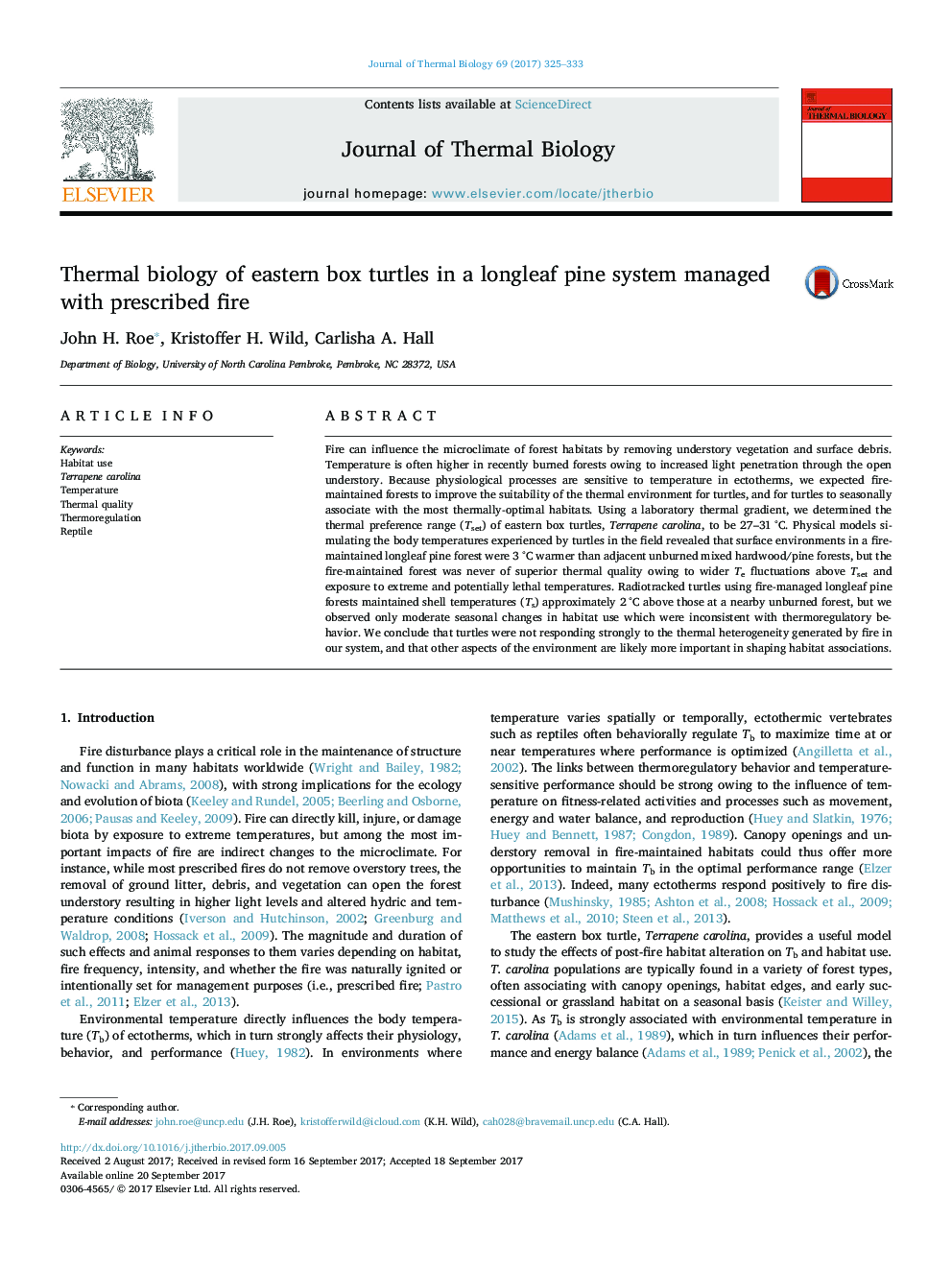| کد مقاله | کد نشریه | سال انتشار | مقاله انگلیسی | نسخه تمام متن |
|---|---|---|---|---|
| 5593372 | 1571079 | 2017 | 9 صفحه PDF | دانلود رایگان |
- Temperature preference of box turtles was 27 - 31 o on a thermal gradient.
- Prescribed fire increases the temperature of forest habitats following burns.
- Turtles in burned forests had higher and more variable shell temperatures.
- Burned forests were not of superior thermal quality compared to unburned forests.
- Box turtles did not seasonally associate with the most thermally optimal habitats.
Fire can influence the microclimate of forest habitats by removing understory vegetation and surface debris. Temperature is often higher in recently burned forests owing to increased light penetration through the open understory. Because physiological processes are sensitive to temperature in ectotherms, we expected fire-maintained forests to improve the suitability of the thermal environment for turtles, and for turtles to seasonally associate with the most thermally-optimal habitats. Using a laboratory thermal gradient, we determined the thermal preference range (Tset) of eastern box turtles, Terrapene carolina, to be 27-31 °C. Physical models simulating the body temperatures experienced by turtles in the field revealed that surface environments in a fire-maintained longleaf pine forest were 3 °C warmer than adjacent unburned mixed hardwood/pine forests, but the fire-maintained forest was never of superior thermal quality owing to wider Te fluctuations above Tset and exposure to extreme and potentially lethal temperatures. Radiotracked turtles using fire-managed longleaf pine forests maintained shell temperatures (Ts) approximately 2 °C above those at a nearby unburned forest, but we observed only moderate seasonal changes in habitat use which were inconsistent with thermoregulatory behavior. We conclude that turtles were not responding strongly to the thermal heterogeneity generated by fire in our system, and that other aspects of the environment are likely more important in shaping habitat associations.
Journal: Journal of Thermal Biology - Volume 69, October 2017, Pages 325-333
